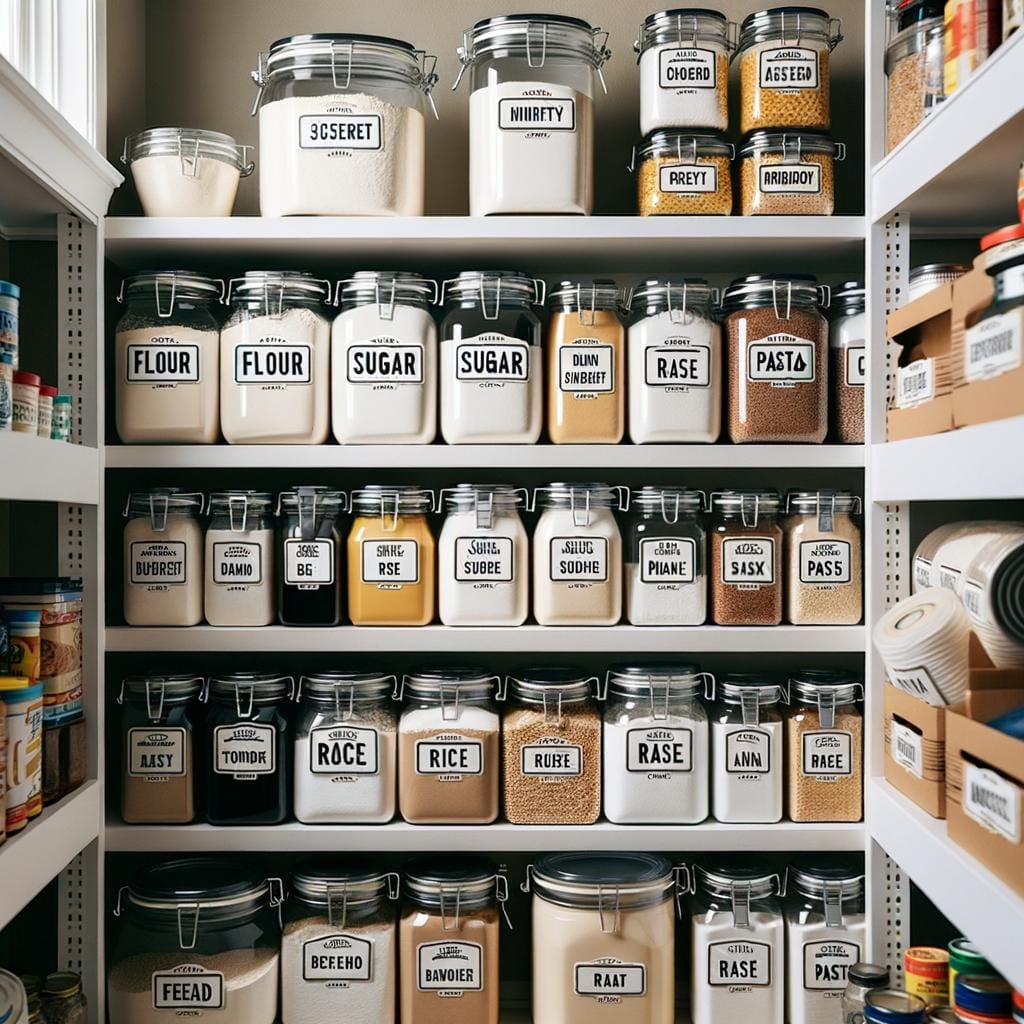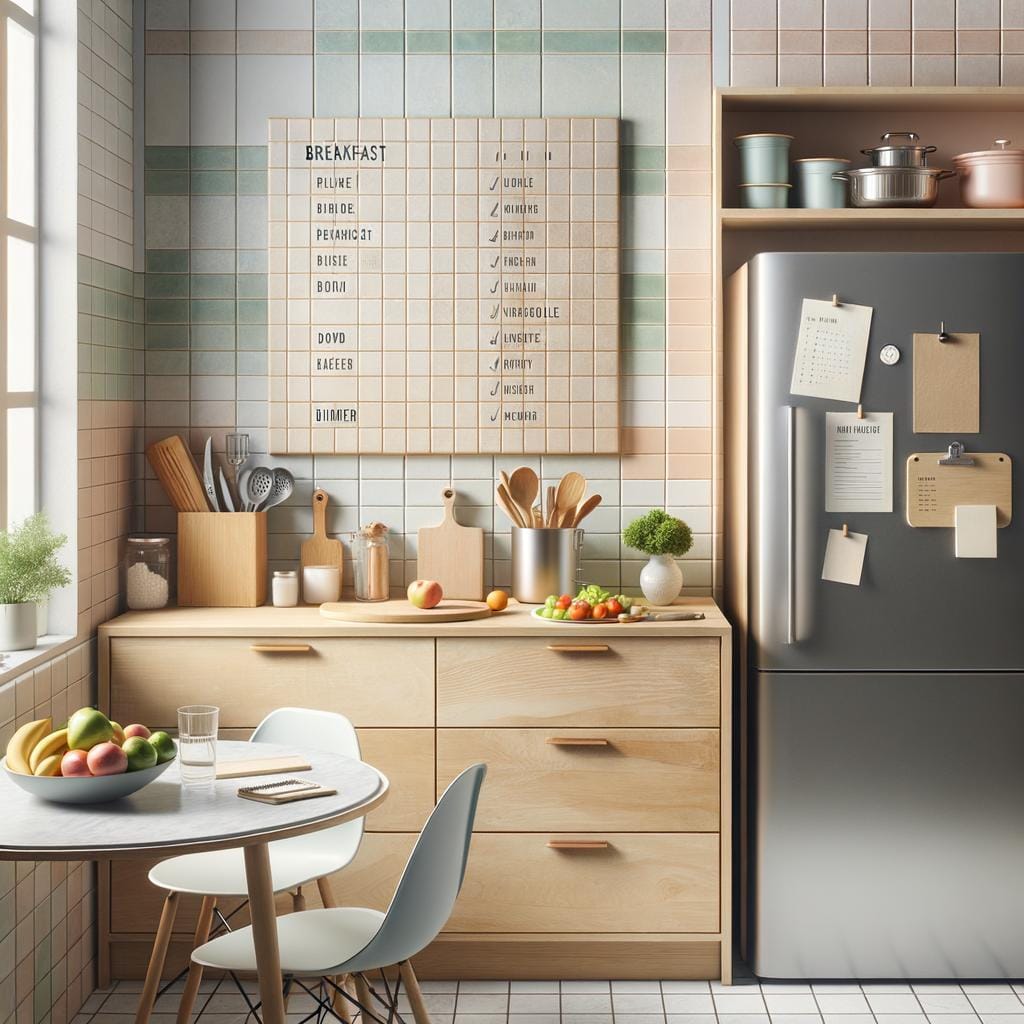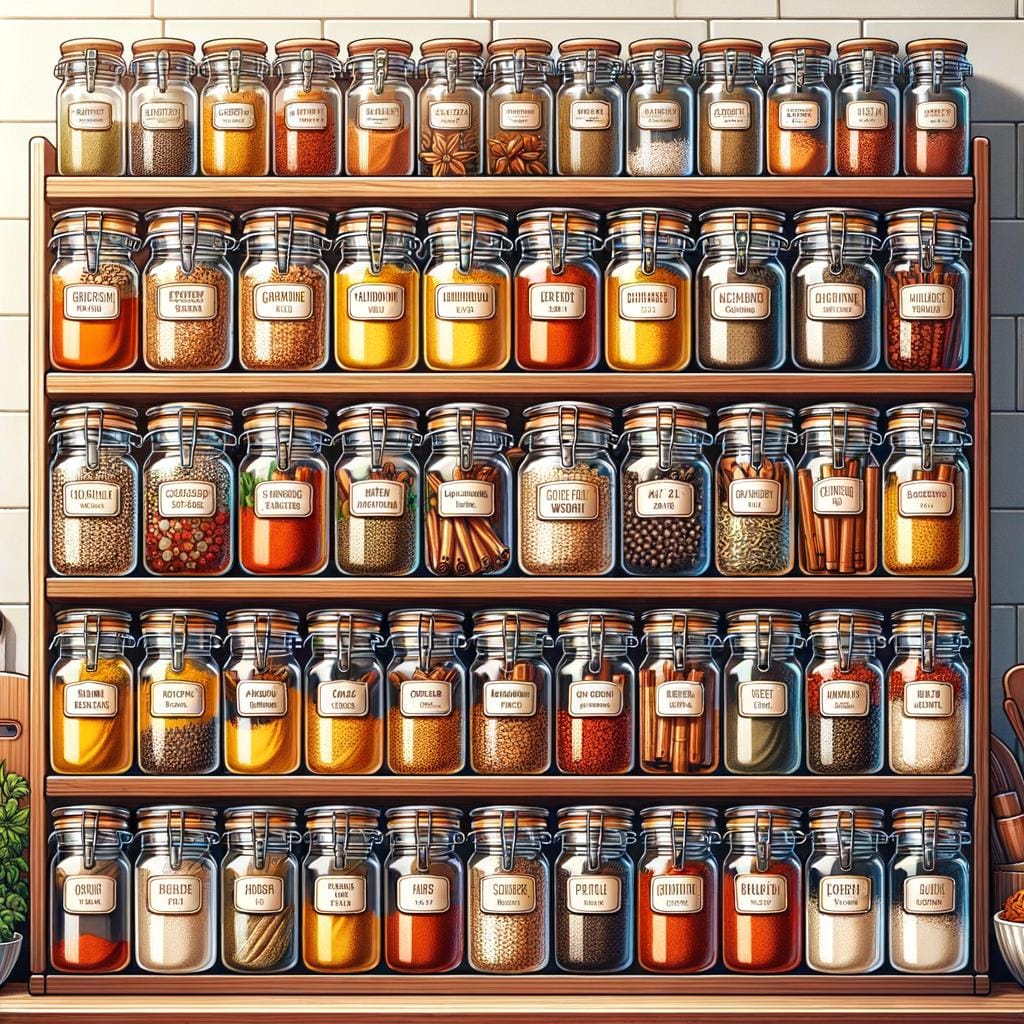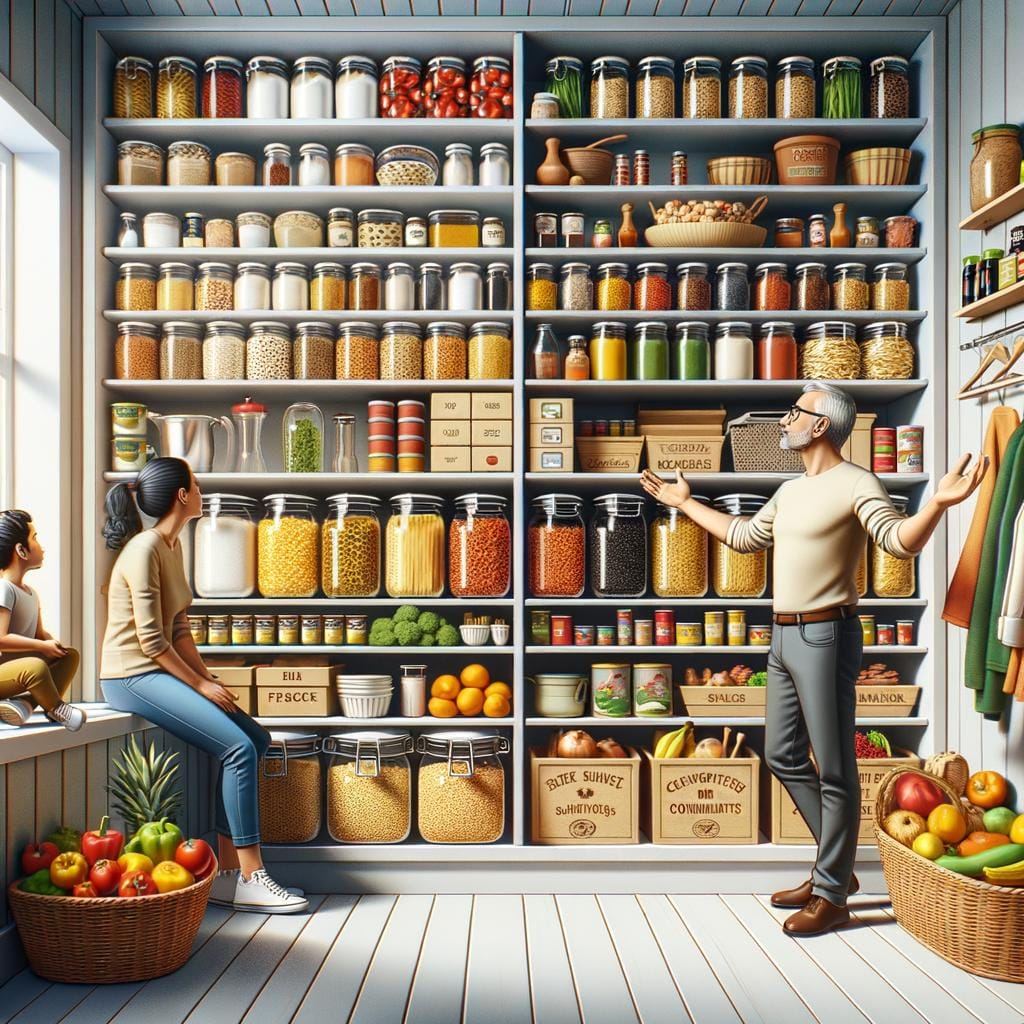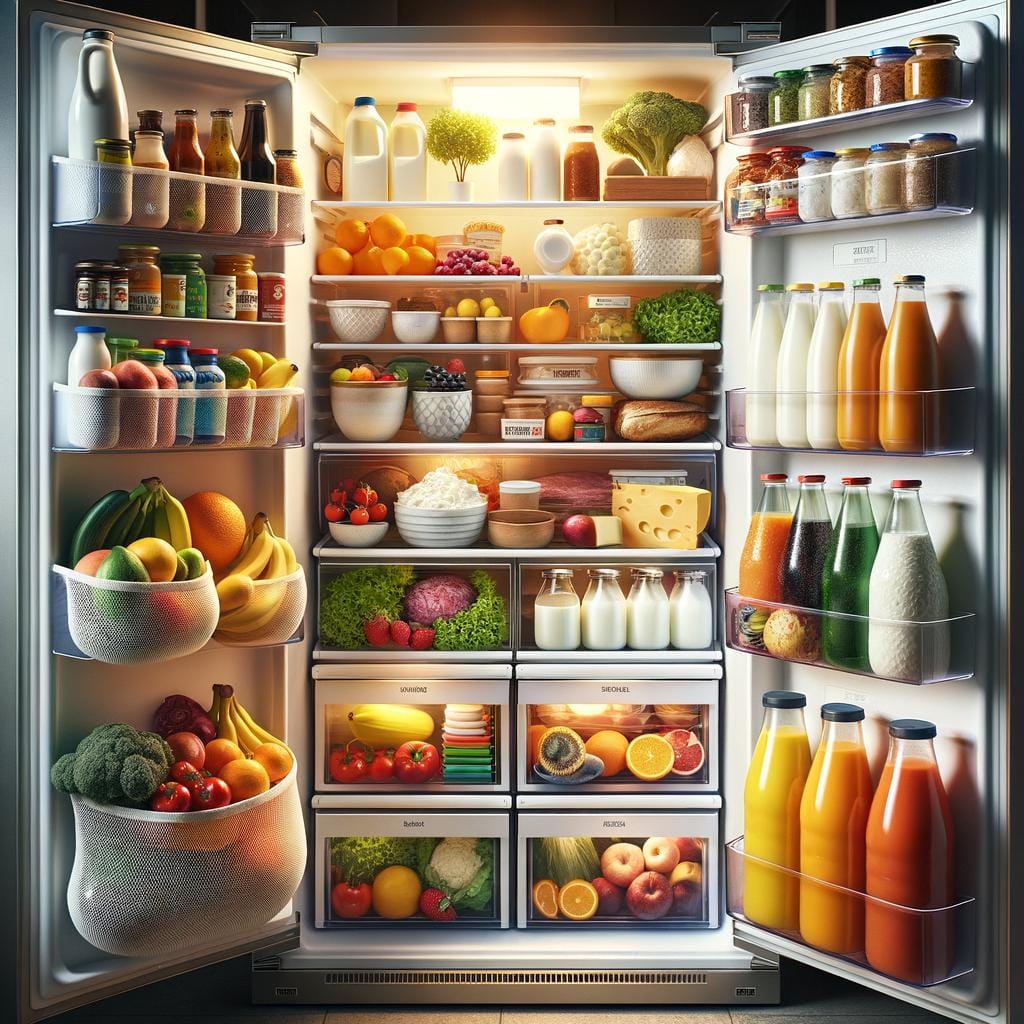A well-organized and labeled pantry can make a world of difference in your daily cooking routine. With proper pantry labeling tips, you can easily find ingredients, keep track of expiration dates, and maintain a clutter-free space. Efficient pantry organization not only saves time but also helps reduce food waste by knowing exactly what you have on hand.
One of the essential aspects of maintaining an organized pantry is labeling. Labels play a crucial role in helping you identify items quickly and maintain order in your storage space. From canned goods to spices to baking ingredients, having clear and visible labels can transform your pantry into a functional and visually pleasing area.
By implementing effective pantry labeling tips, you not only streamline your meal preparation process but also create a more efficient kitchen workflow. In this article, we will explore the benefits of pantry labeling, essential supplies needed for labeling, creative label ideas, tips on choosing the right labels, step-by-step guidance on how to label your pantry, maintenance tips for a well-organized space, as well as DIY projects to enhance your pantry organization.
Let’s dive into the world of pantry organization and discover how simple labeling techniques can make a significant impact on your daily life.
Benefits of Pantry Labeling
Pantry labeling is more than just a decorative touch to your kitchen storage space; it serves a practical purpose in maintaining an organized and efficient pantry. By labeling your pantry items, you not only enhance the visual appeal of the space but also make it easier to find and access ingredients quickly. Here are some benefits of pantry labeling:
- Efficiency: With clearly labeled containers, bins, and shelves, you can easily identify where each item belongs and streamline your cooking and meal-preparation process.
- Prevention of Food Waste: Properly labeled ingredients help you keep track of expiry dates, ensuring that nothing goes to waste by accidentally being forgotten at the back of the pantry.
- Inventory Management: By knowing what you have at a glance, thanks to clear labels, you can easily create grocery lists and avoid overbuying duplicates of items already in stock.
Furthermore, pantry labeling promotes a sense of orderliness and cleanliness in your kitchen. It eliminates the chaos that often comes with rummaging through disorganized shelves or containers in search of a specific item. Not only does this save time during meal prep but also reduces stress levels associated with cluttered spaces.
In addition to the practical benefits, pantry labeling can also serve as a creative outlet for personalizing your kitchen decor. With various label designs, fonts, and colors available on the market, you can tailor your pantry organization system to match your style preferences. Whether you opt for sleek and minimalist labels or vibrant and playful ones, incorporating visually appealing labels can transform your pantry from a storage space into a design statement within your home.
Essential Supplies for Pantry Labeling
When it comes to organizing and labeling your pantry, having the right supplies on hand is key to ensuring a successful and efficient process. Here are some essential supplies that you will need to effectively label your pantry:
- Label maker or pre-printed labels: Investing in a good quality label maker can make the task of labeling your pantry quick and easy. Alternatively, you can use pre-printed labels that are suitable for kitchen use.
- Chalkboard labels or erasable markers: Chalkboard labels are a versatile option that allows you to easily change and update labels as needed. Alternatively, using erasable markers on smooth surfaces such as glass jars or plastic bins can be a cost-effective labeling solution.
- Clear storage containers: Opt for clear storage containers for items like flour, sugar, rice, and pasta to easily identify the contents without having to open each container. This not only helps in maintaining a well-organized pantry but also makes labeling more visible.
In addition to these supplies, consider having a few other handy tools such as scissors for cutting labels to size, adhesive putty or tape for securing labels onto containers, and a damp cloth for cleaning surfaces before applying labels. By having all these essential supplies ready before you begin the pantry labeling process, you can streamline the organization of your pantry effectively.
Whether you opt for an elaborate labeling system or a simple yet effective approach using basic supplies, the key is consistency in maintaining an organized pantry space. With the right supplies at your disposal and a methodical approach to labeling, you can enjoy the benefits of a well-organized pantry that not only looks visually appealing but also helps in making meal prep and cooking more efficient.
Start by gathering all your necessary supplies and get ready to transform your pantry into a clutter-free and functional space with these pantry labeling tips.
Creative Pantry Label Ideas
When it comes to organizing your pantry, creative labeling can make a significant difference in how efficient and visually appealing your space is. One fun and practical idea is to use chalkboard labels. These are versatile as you can easily erase and rewrite the contents as they change, ensuring that your pantry remains up-to-date.
Another creative label idea is using mason jar lids with printable labels. This adds a charming touch to your pantry while keeping everything neatly labeled.
In addition to traditional labels, incorporating color-coded labels can be a game-changer in maintaining an organized pantry. Assigning specific colors for different categories such as grains, snacks, or cooking essentials can make finding items a breeze. Moreover, using clear bins with corresponding colored labels inside them can create a cohesive look while still providing clarity on what each container holds. These small but impactful details can elevate the overall aesthetic of your pantry.
For those looking for a more eco-friendly option, consider using reusable and washable fabric labels. These can be attached to baskets or bins with safety pins or hooks for easy swapping when needed. Alternatively, you could opt for magnetic labels that adhere to metal surfaces such as tin containers or spice tins. Not only are these options sustainable, but they also add a unique element to your pantry organization system.
| Pantry Label Ideas | Description |
|---|---|
| Chalkboard Labels | Versatile and easy to update |
| Color-Coded Labels | Efficient way to categorize pantry items |
| Fabric Labels | Eco-friendly and washable option |
Tips for Choosing the Right Labels
Choosing the right labels for your pantry is crucial in maintaining an organized and efficient space. When selecting labels, it’s essential to consider factors such as durability, visibility, and aesthetics. Opting for labels that are easy to read and resistant to moisture and wear will ensure they remain effective over time.
One key tip for choosing the right labels is to select materials that match the containers in your pantry. Whether you prefer clear plastic bins, wicker baskets, or glass jars, coordinating your labels with these materials can create a cohesive look that enhances the overall organization of your pantry.
Another important consideration when choosing labels is to think about how they will be affixed to your containers. Adhesive labels work well on smooth surfaces like glass or plastic, while hanging tags or clips may be more suitable for baskets or bins. Additionally, choosing labels that can be easily removed and replaced can allow for flexibility in rearranging your pantry as needed.
| Label Material | Container Type |
|---|---|
| Clear plastic | Glass jars |
| Paper tags | Wicker baskets |
| Vinyl stickers | Plastic bins |
In addition to material and attachment method, the size and style of the labels should also be taken into account. Labels that are too small may be difficult to read, while oversized labels can overwhelm smaller containers. Consider incorporating a mix of sizes and styles within your pantry labeling system to accommodate different container sizes and shapes effectively.
By following these tips for choosing the right labels, you can ensure that your pantry remains neatly organized and easily accessible. Investing time in selecting the appropriate labeling supplies tailored to your pantry’s specific needs will ultimately streamline your cooking routine and contribute to a more efficient kitchen space.
Step-by-Step Guide to Labeling Your Pantry
Organizing and labeling your pantry can make meal prep, cooking, and grocery shopping much more efficient and stress-free. With a well-labeled pantry, you can easily locate ingredients, keep track of inventory, and create a visually appealing space in your kitchen. In this section, we will provide you with a step-by-step guide on how to effectively label your pantry for maximum organization.
Gather Your Supplies
Before you start labeling your pantry, gather all the necessary supplies. You will need labels (either pre-made or DIY), markers or label makers, measuring tape, cleaning supplies, containers for decanting items if needed, and any other tools that may help in the process. Make sure to choose labels that are durable and waterproof to withstand any spills or moisture in the pantry.
Sort and Categorize
The first step in labeling your pantry is to sort through all the items in it. Remove everything from your shelves and categorize them based on type (e.g. grains, spices, canned goods). This will help you decide where each item should be placed in your pantry and how it should be labeled. It’s also a great time to toss out any expired or unused items to declutter your space.
Labeling Process
Once you have sorted and categorized all items, it’s time to start labeling. Use your chosen labels and markers to clearly mark each shelf or container with its contents. You can get creative with how you label – whether it’s using chalkboard labels for a rustic look or color-coding labels for different categories. Be consistent with formatting and placement of labels throughout your pantry for a cohesive and organized look.
By following these steps and incorporating the right pantry labeling tips into your process, you can transform your pantry into a well-organized space that not only looks great but also makes meal prep easier than ever before.
Maintenance Tips for a Well-Organized Pantry
Maintaining a well-organized pantry is essential to ensure that your food items are easily accessible and that you can quickly identify what you have on hand. Implementing effective maintenance tips will help you sustain the organization and labeling system you’ve set up in your pantry. Here are some key tips to help you keep your pantry in top shape:
Regularly Check Expiration Dates
One of the most crucial aspects of pantry maintenance is regularly checking the expiration dates of your food items. Make it a habit to go through your pantry at least once a month and dispose of any expired or spoiled products. This practice not only helps prevent food waste but also ensures that you’re only storing fresh and safe items in your pantry.
Reorganize Periodically
Over time, the organization of your pantry may start to feel cluttered or inefficient. To combat this, consider reorganizing your pantry periodically. Take stock of what’s on your shelves, rearrange items as needed, and adjust labels accordingly. This practice will help you maintain an efficient storage system and prevent unnecessary clutter from building up.
Update Labels as Needed
As you use up food items or introduce new ones into your pantry, make sure to update labels accordingly. Whether it’s adding new labels, replacing old ones, or simply adjusting existing labels to reflect changes in inventory, keeping your labeling system up-to-date is key to maintaining an organized pantry. By staying on top of labeling updates, you’ll continue to reap the benefits of a well-organized space where everything has its place.
By incorporating these maintenance tips into your routine, you’ll be able to enjoy the long-term benefits of an organized and efficiently labeled pantry. Keeping a well-maintained pantry not only simplifies meal preparation but also helps reduce food waste by ensuring that all items are used before they expire. Remember to incorporate these tips into your regular household routines for a clutter-free and functional kitchen space that makes mealtime a breeze.
Pantry Labeling Tips for Different Pantry Styles
When it comes to pantry labeling, one size does not fit all. Different pantry styles require different approaches to ensure that everything stays organized and easily accessible. Whether you have a walk-in pantry, a stand-alone cabinet, or open shelving, here are some pantry labeling tips tailored to suit your specific pantry style.
For a walk-in pantry with multiple shelves and storage areas, consider using clear plastic bins or baskets to categorize different items such as snacks, baking supplies, or canned goods. Utilizing these containers allows for easy visibility of the contents while also keeping everything neatly organized. Label each bin with a category name using either chalkboard labels or adhesive labels for a clean and cohesive look.
If you have a stand-alone pantry cabinet with pull-out drawers or shelves, opt for drawer liners or shelf liners in coordinating colors to add a pop of style while also protecting the surfaces. Use smaller adhesive labels to identify the contents of each drawer or shelf, making it quick and efficient to find what you need. Consider color-coding your labels based on categories for an extra level of organization.
For those with open shelving in their pantry, try using wire baskets or woven bins to corral similar items together. This not only adds texture and visual interest but also keeps things looking tidy. Use hanging tags or clips on the edge of each basket to display labels indicating what belongs inside. This method is perfect for those who prefer a more minimalist and aesthetically pleasing approach to pantry organization through labeling.
By tailoring your pantry labeling strategies to fit your specific pantry style, you can create a space that not only looks organized but also functions efficiently for your daily needs. Experiment with different label designs, materials, and placement options until you find what works best for your unique pantry setup. These personalized pantry labeling tips will help maintain order and simplify meal prep and grocery shopping in the long run.
DIY Pantry Labeling Projects to Try at Home
Are you looking to add a personal touch to your pantry organization? DIY pantry labeling projects are a great way to not only keep your pantry organized but also showcase your creativity. By incorporating handmade labels, you can add a unique and stylish flair to your pantry shelves while ensuring easy access to your ingredients. Here are some fun and simple DIY pantry labeling projects to try at home.
One of the easiest DIY pantry labeling projects is creating chalkboard labels. All you need is some chalkboard paint, adhesive labels, and chalk. Simply cut the adhesive labels into desired shapes, paint them with the chalkboard paint, let them dry, and then write the names of your pantry items with chalk. These reusable labels can be easily wiped clean and rewritten as needed, allowing for flexibility in organizing your pantry.
Another creative DIY pantry labeling idea is using mason jars and twine. Simply attach small wooden tags or circles to the jars with twine, labeling each one with the name of the ingredient stored inside. This rustic look adds a charming touch to your pantry shelves while keeping everything neatly labeled. You can even add decorative elements such as beads or charms to customize each label according to the item it represents.
Conclusion
In conclusion, utilizing pantry labeling tips can truly transform your kitchen space into a clutter-free and organized area where you can easily find what you need when cooking or baking. By implementing creative pantry label ideas and choosing the right labels for your containers, you can create a visually appealing and functional pantry that enhances your overall cooking experience.
Maintaining a well-organized pantry is key to ensuring that your labeling system remains effective in the long run. Regularly check and update your labels as needed, especially after grocery shopping or when items are replenished. By following maintenance tips such as reviewing expiration dates and reorganizing items, you can prevent clutter from building up in your pantry and maintain an efficient system for locating ingredients.
Whether you have a walk-in pantry, a reach-in closet pantry, or even just a small cabinet designated for storage, there are specific pantry labeling tips tailored to different pantry styles. By customizing your labeling approach to suit the layout and size of your pantry space, you can maximize its efficiency and make the most of the available storage options.
Embrace DIY pantry labeling projects to add a personal touch to your organization system and make it uniquely yours. With these strategies in place, you can enjoy a well-organized pantry that simplifies meal preparation and adds convenience to your daily routine.
Frequently Asked Questions
How Do You Label Pantry Items?
I label pantry items by using clear containers or jars with labels indicating the contents. This helps me easily identify what each item is without having to open every container.
How Should I Categorize My Pantry?
When categorizing my pantry, I typically organize items based on their type or use. For example, I group together baking essentials, canned goods, spices, grains, snacks, and beverages in separate sections for easy access and visibility.
How Do You Professionally Organize a Pantry?
To professionally organize a pantry, I start by decluttering and removing any expired or unused items. Then, I invest in storage solutions such as bins, baskets, and shelf dividers to maximize space and create a cohesive look. Additionally, labeling everything helps maintain organization and make it easier to find what you need.

Hello, I’m April Denton, your go-to expert for all things home decluttering and organization. With over a decade of experience helping individuals transform their living spaces into serene, clutter-free sanctuaries, I am passionate about the life-changing benefits of decluttering. My journey into the world of organization began out of necessity, juggling a busy career and a bustling household. I quickly realized that a well-organized home was the key to a more balanced, stress-free life.

